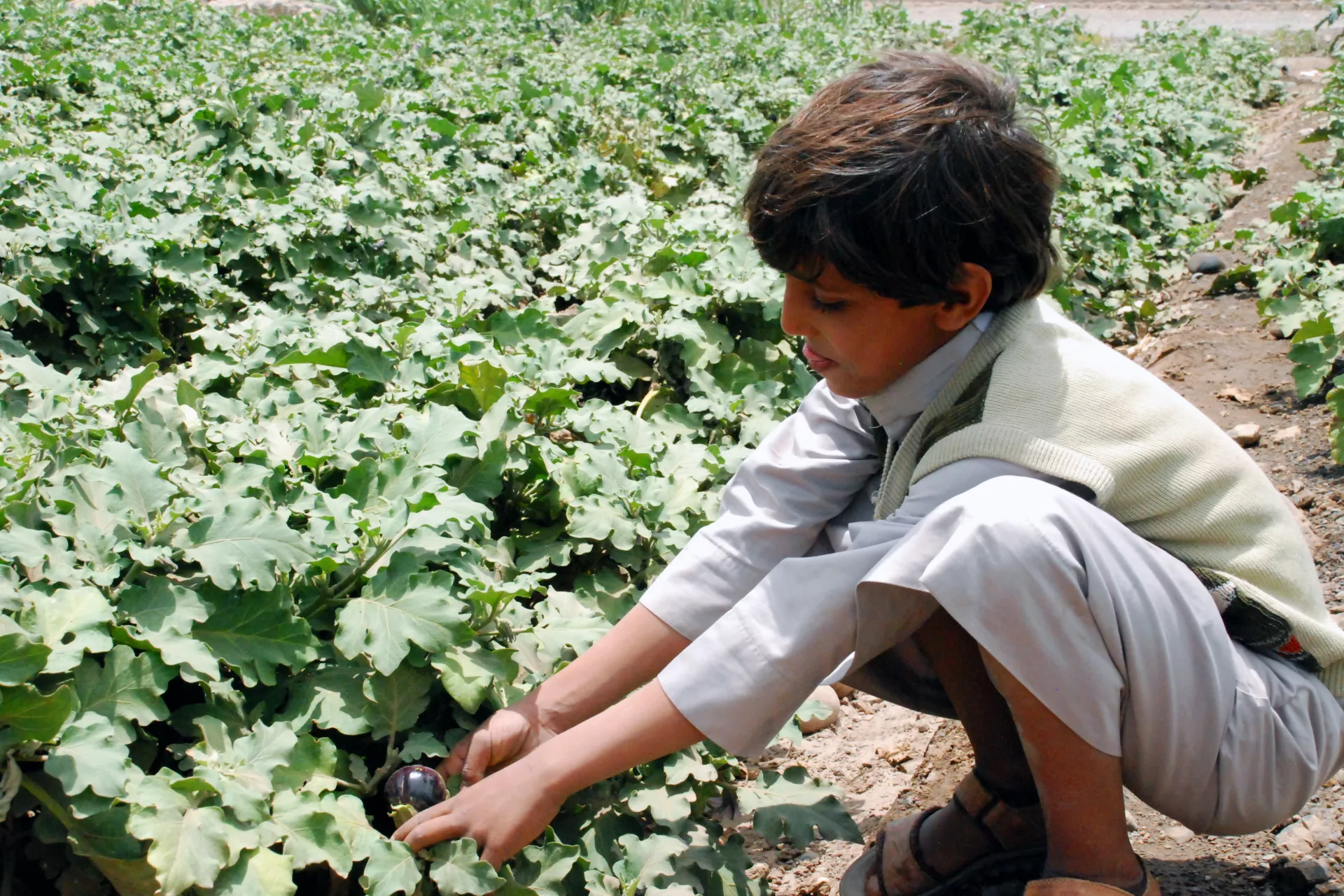Averting a major health crisis in Yemen’s capital city
When escalating conflict caused damage to a wastewater treatment plant, raw sewage water streamed dangerously through the Bani-Al-Hareth district, exposing residents to harmful waste and a potential public health crisis

- Available in:
- English
- 中文
In the northern part of Yemen’s capital city of Sana’a, 1.5 million people are serviced by a single wastewater treatment plant. When escalating conflict caused damage to the plant, raw sewage water streamed dangerously through the Bani-Al-Hareth district, exposing residents to harmful waste and a potential public health crisis.
SANA’A, Yemen, 3 August 2016 – When conflict escalated in Yemen in March 2015, the resulting damage to infrastructure cut off electricity to a sewage treatment plant that turns human waste into harmless manure for fertilizing agricultural lands. Production at the plant ground to a halt, and raw sewage water streamed dangerously through Bani Al-Hareth, a district north of the capital, Sana’a. A heavy stench from all types of human waste engulfed the area and a swamp of flies spread throughout.
Abdo Ali Tammah lives in the area, and said the unpleasant sight and smell of the sewage added to the misery already inflicted on them by the violent conflict.
“There was nowhere to turn to. There were too many flies and other insects attracted by the raw sewage,” said Mr. Tammah. “Our crops in the farms were not spared, they just died,” he added.
Children at risk
The situation had the potential to exacerbate the effects felt from the ongoing conflict, and potentially turn into a public health crisis. Inadequate access to safe water and sanitation services, coupled with poor hygiene practices, kills and sickens thousands of children around the world every day, and leads to impoverishment and diminished opportunities for thousands more.

The northern part of Sana’a depends on this particular sewage plant for safe disposal of human waste. Initially built to serve only 500,000 people, the treatment plant now handles a waste mass for nearly 1.5 million people as the city population has increased.
“We are at risk of diseases and I am worried especially for our children because of the poor sanitation and hygiene situation created by this flow of waste,” Mr. Tammah said.
“The untreated waste water is passing through the Bani Al-Hareth district and it is being utilized for irrigation purposes by the locals. The vegetables grown on this soil – eggplants, potatoes, lettuce, and others – are being sold and consumed by the people living in and around Sana’a city, which is very threatening to their health and our environment,” explained Abdulwahab Salah, the Deputy Director at the sewage treatment plant.
The local authorities and the residents of Bani Al-Hareth like Mr. Tammah were left with no options – no electricity, and no fuel to power the generators that process the waste water.
Race to avert a public health crises
In emergency situations like the one in Yemen, safe water and sanitation are among the highest priority interventions. Unless adequate water and sanitation services are quickly provided to emergency-affected children and their families, disease and death will follow. This is true in all types of emergencies, from natural disasters to conflicts caused by a range of complex factors.

In July 2015, UNICEF stepped in to provide fuel to power the sewage treatment plant so that dangerous waste could be disinfected. More than one million litres of fuel were supplied, allowing authorities to run the plant since August 2015.
This was a big relief to Mr. Tammah and the other residents of Bani Al-Hareth, as well as the people exposed to health risks.
“We got back to normal life. Our lives are saved,” Mr. Tammah said.
Local authorities from the Water and Sanitation Corporation say the support from UNICEF to run the sewage treatment plant helped to prevent the outbreak of diseases.
However the supply of fuel, which is dependent on donor funding, is not sustainable.
In Yemen, more than 19 million people are in dire need of regular access to safe drinking water, sanitation and hygiene services.
>> Learn more about the humanitarian needs of the children of Yemen




